For year I have been making hard leather items like knife sheaths, holsters, quiver, arm guards but I have always wanted to branch off into soft leather items using buckskin, full grain, upholstery leather and suede?s.
My late great Uncle Al used to make leather chopper mitts and bring them up north when he would visit. We got a lot of use out of those mitts in cold weather. Here is one of those mitts Al made about 30 years ago.
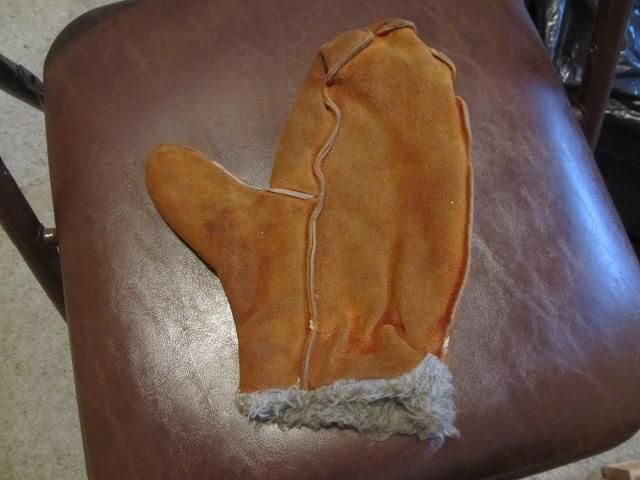
Al?s mitts were warm and simple and utilitarian and kept my hands warm while hunting all these years. For many years I have wanted to make my own mitts. The recent cold snap and the increase in my sewing projects got me again interested in trying my hand at sewing my own mitts. If there was anything I would change about Al?s mitts it would be the length and the liners. They didn?t go up the arm enough to cover the cuff of a jacket. I plan to make mine a bit longer. Also Al?s mitts did not have a removable liner. The faux fur he used was sewn into the leather mitt. I plan to make my liners removable so if the liners need drying the liner can be removed to speed drying and to be able to care for the liner separately from the leather since leather doesn?t like the heat I would use to dry the liner. Then when I use the snow blower I wont have cold wrists and forearms. the longer cuff will make them warmer for hunting and ice fishing as well.
I will be using the tanned hide of a deer I killed a few years ago.
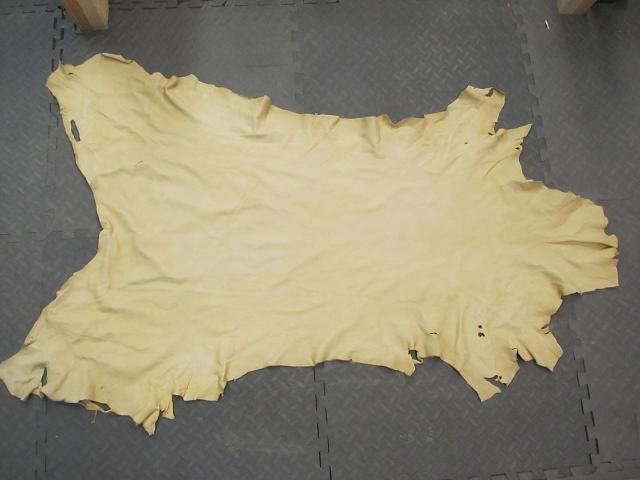
As well as fur
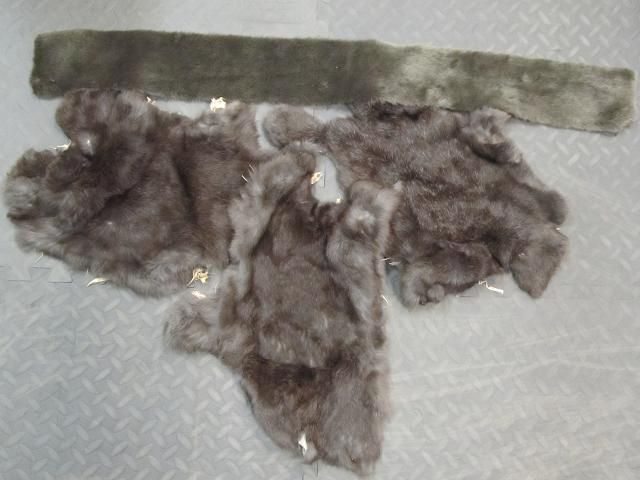
The liners will be a dual layer of Polartec fleece closest to the skin as well as wool. The wool comes from a Swiss army surplus blanket.

Before I could any further I needed to make a pattern for the liner and another pattern for the leather mitt. Because I want a longer mitt that fits over the bulky sleeve of a winter jacket I had flare out the longer cuff. I will start with the fleece and wool liner and then make a mitt that fits over the liner. Here is the pattern I came up with. Its 3 pieces with a folding thumb.
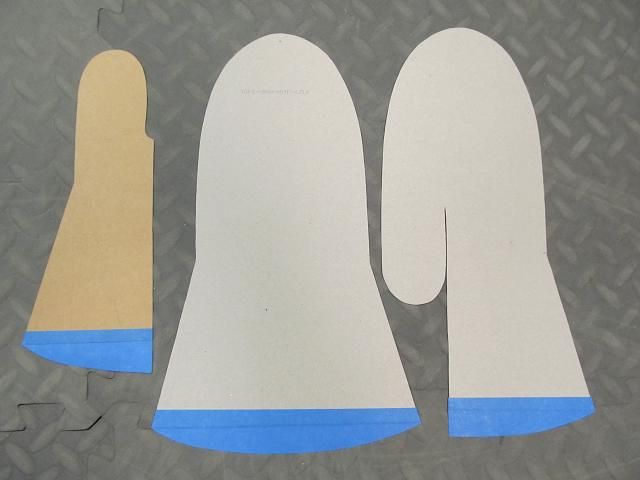
Then I cut the pieces from the wool and Polartec fleece.
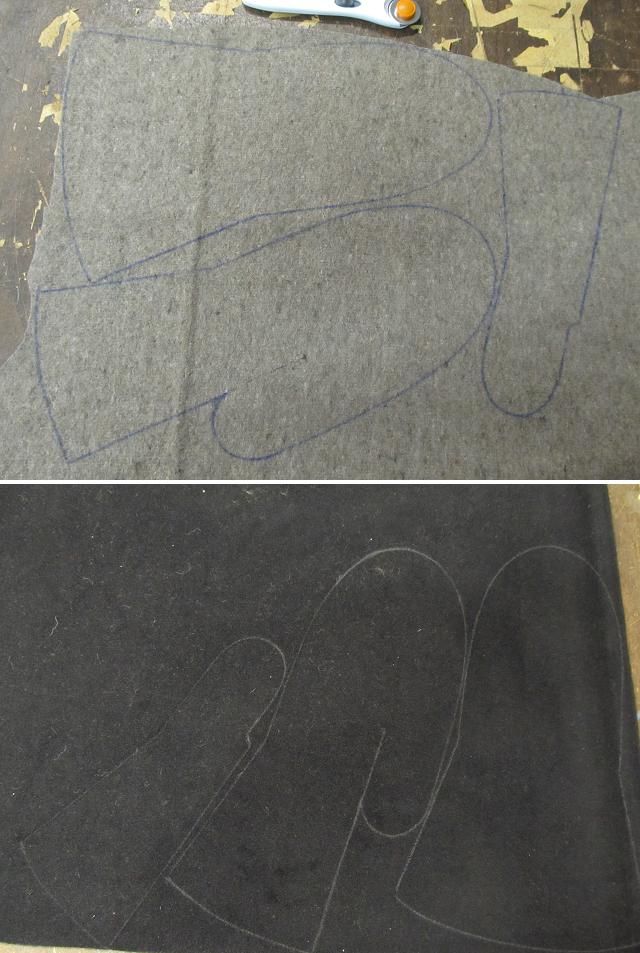
The two materials are sewn together to keep them from shifting when I join the separate pieces together.
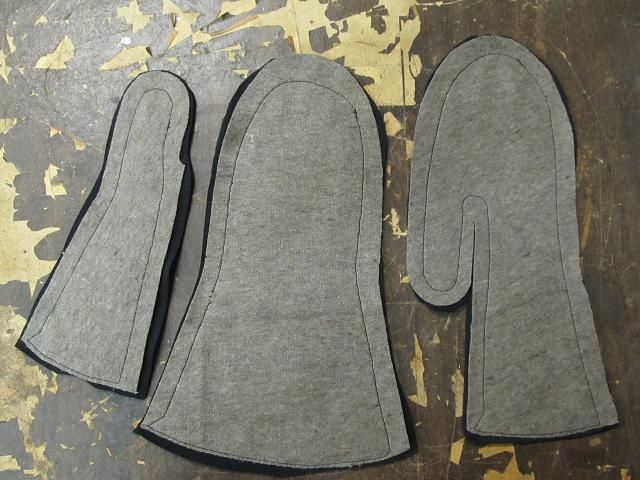
I plan to have fur on both the liner and the leather mitt. Its more for show than warmth.
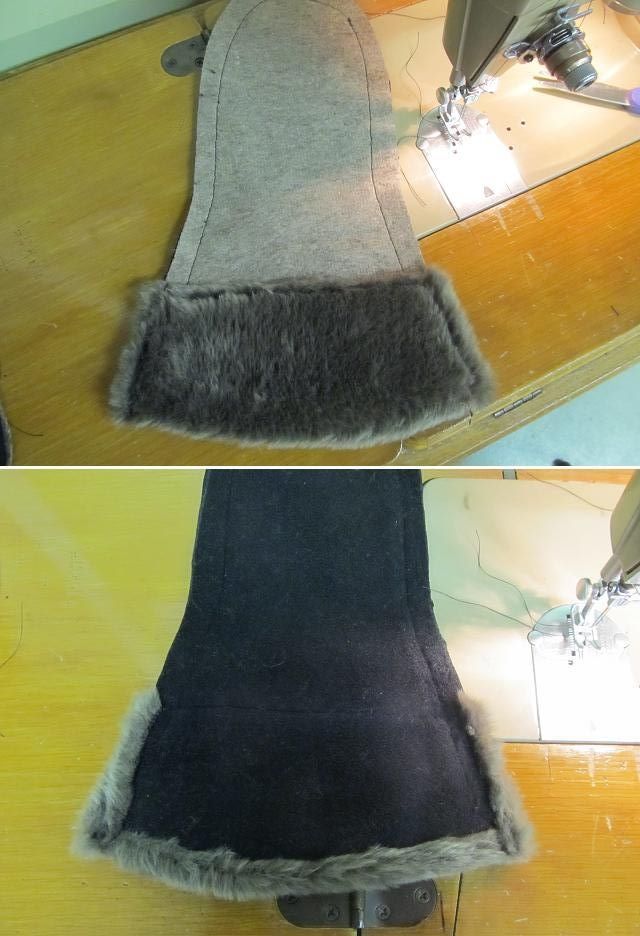
Before I can sew the fur to the other part of the liner I need to join the two pieces together to form the thumb. The three pictures below show the steps to form the thumb.

Then fur is added to the other half of the liner.
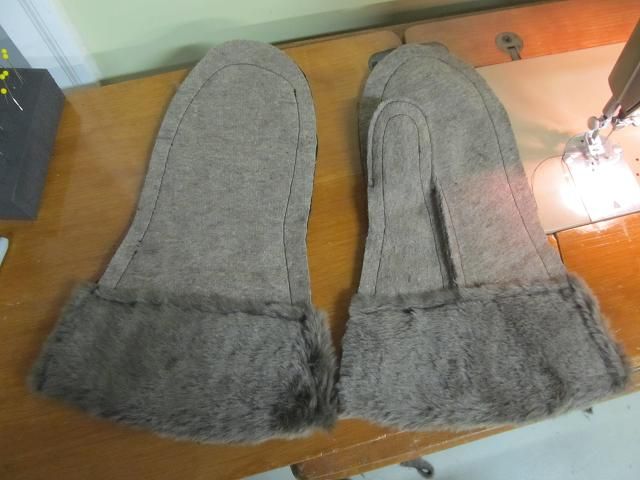
Then the two halves are sewn together.
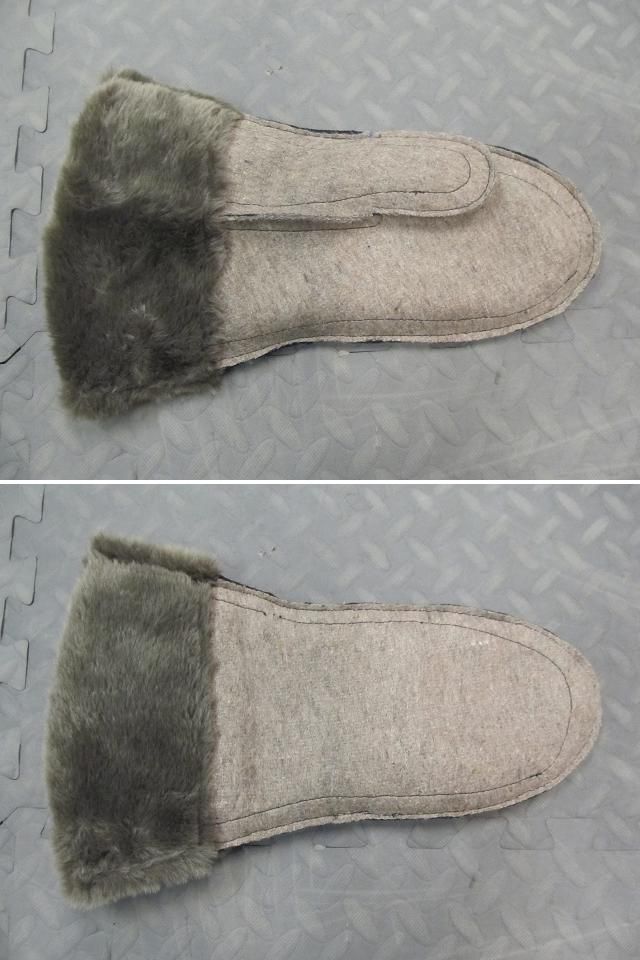
Should the outside leather get wet all the way through (I?m working to make sure that won?t happen) The wool outside of the liners is given a spray coating of silicone waterproofer.
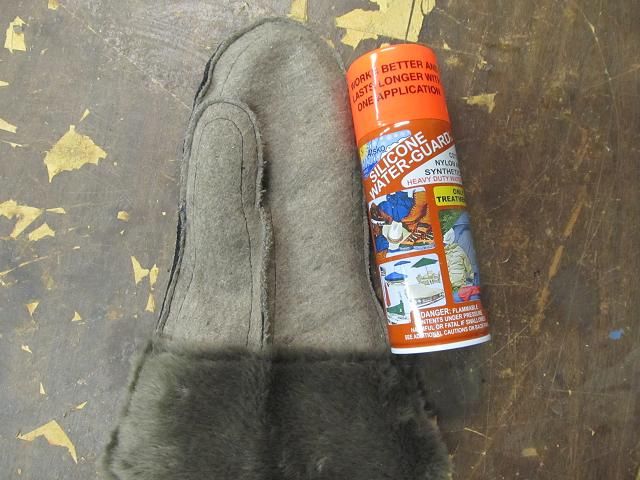
With the liners finished its time to make the leather outer mitt. Again I need a pattern. The leather mitt thumb will be a bit different than the thumb in the liner. This will be a bit more difficult to sew but will look far better.
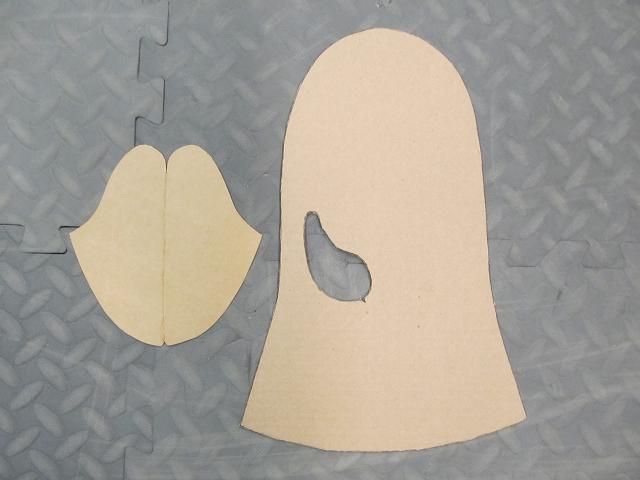
I made a practice thumb to get a feel for sewing it and for a size check. I?m glad I did at the thumb was a bit long so I shortened the pattern (since it was easier than growing my thumb)
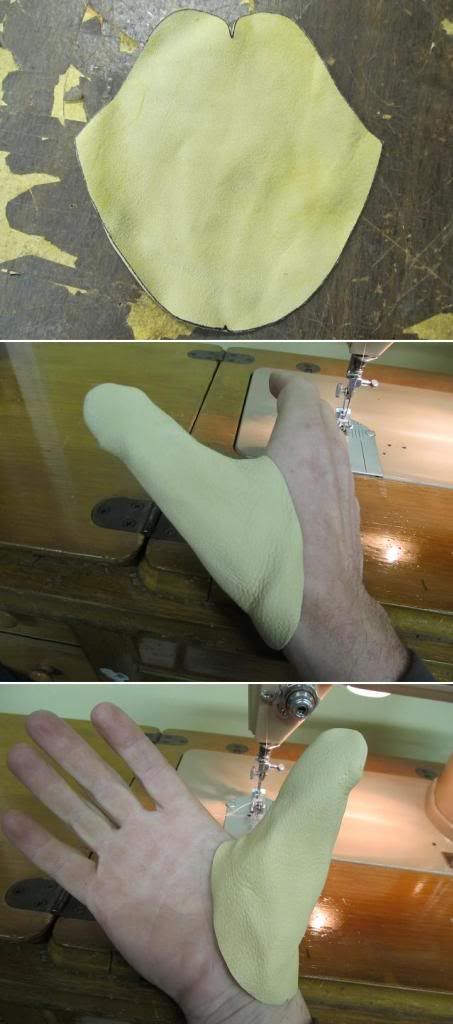
Then I cut the halves of the mitt from the deer skin.
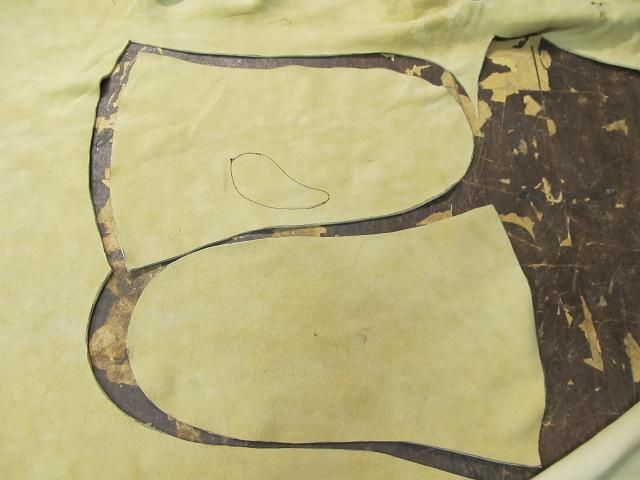
The plain deer skin is very light in color and will show dirt and stains pretty easy so I am going to stain the thumb and palm side with a mixture of brown and Ox blood with a little alcohol to thin it out since I don?t want a solid color. Once I oil the leather it will darken considerable from this shade. I have other plans for the back of the hand so Im not staining it.

While I wait for the stain to dry on the leather I have time to embellish the back of the mitt. I sewed on a strip of the same fur and added the Edge protection since the leather edge will curl and wrinkle over time if it not sewn.
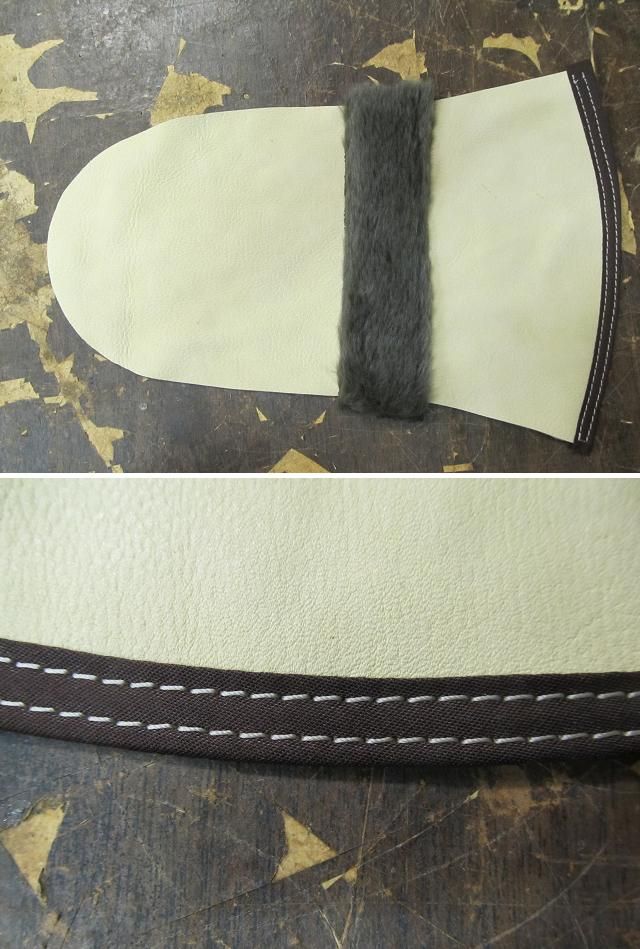
Then I saw the cuff as a big blank space needing something to fill it in so I reached for the sharpie marker.
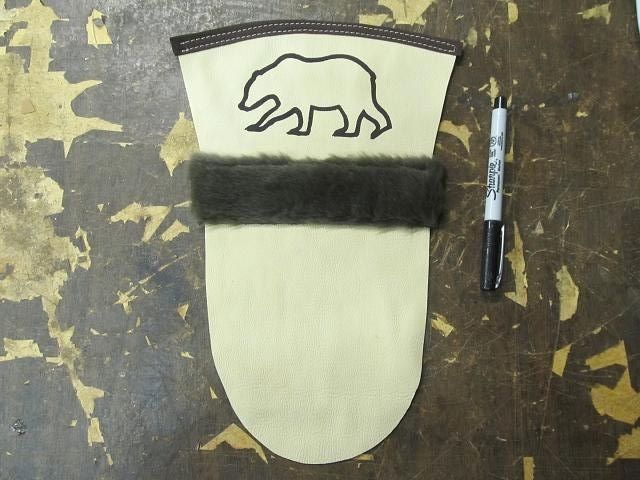
With the dyed leather dry its time to start sewing. I start by sewing the thumb inside out to hide the stitching and to protect it from wear.
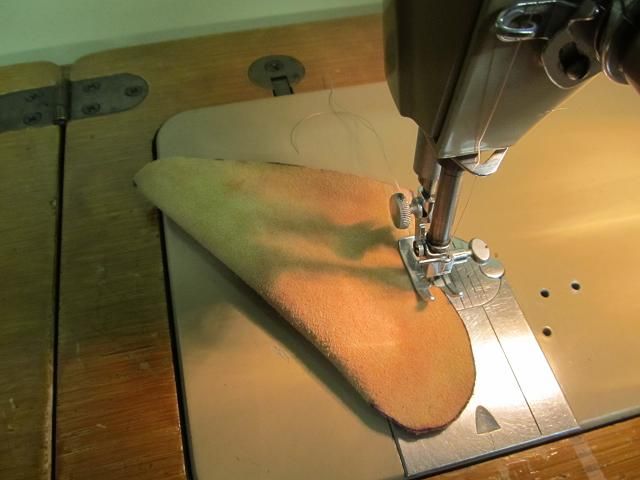
Then the thumb is turned right side out and slipped inside the opening in the palm and sewn from the outside. I stitched it twice for added strength.
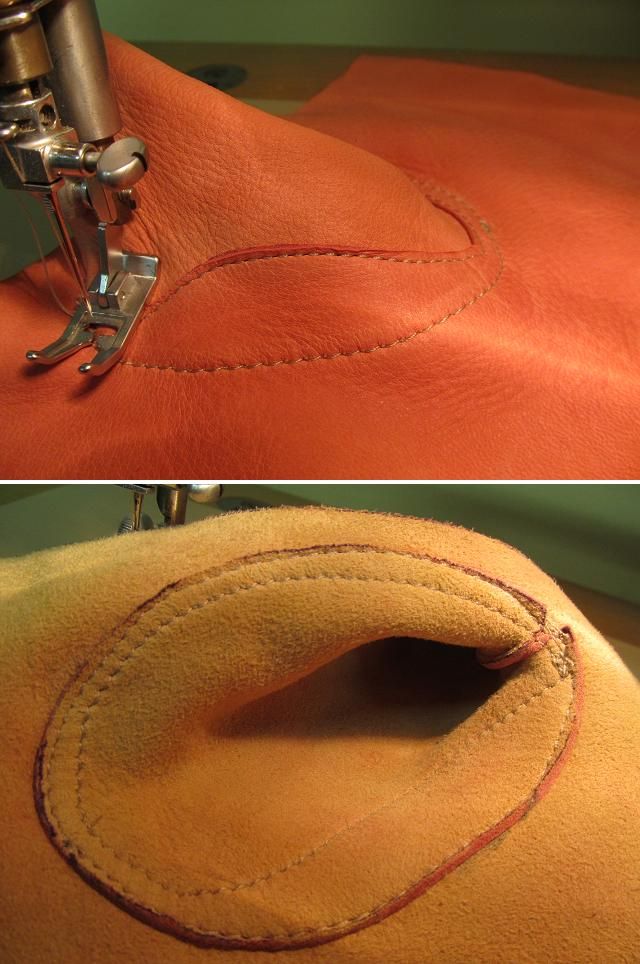
The two halves are sewn together inside out again to hind and protect the stitching and to tuck in the fur trim edge.

Then the mitt is turned right side out. As you can see the palm was also a blank slate in need of some decoration so I fired up the sharpie marker again.
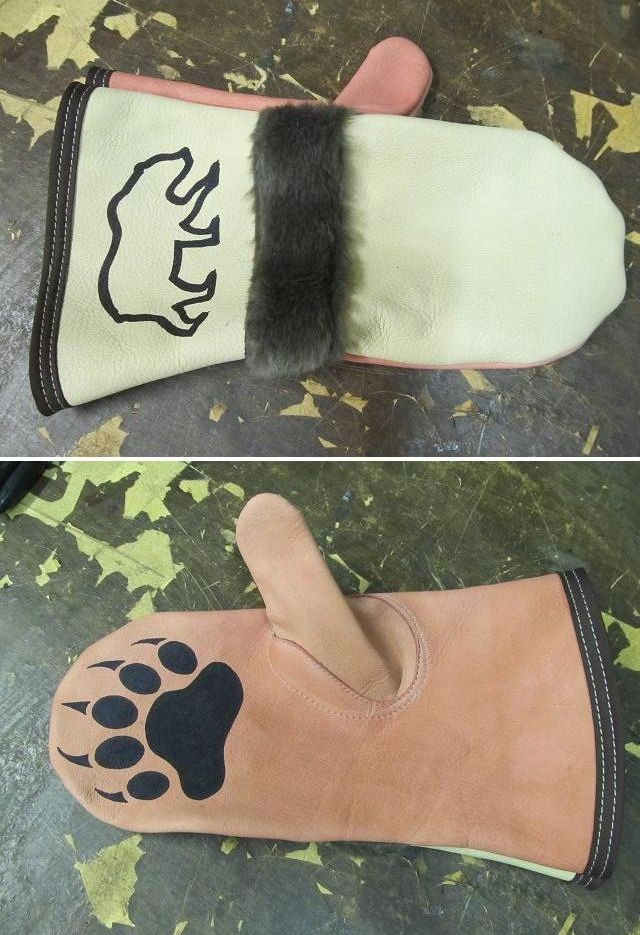
The liner and the mitt meet for the first time. Everything fits.
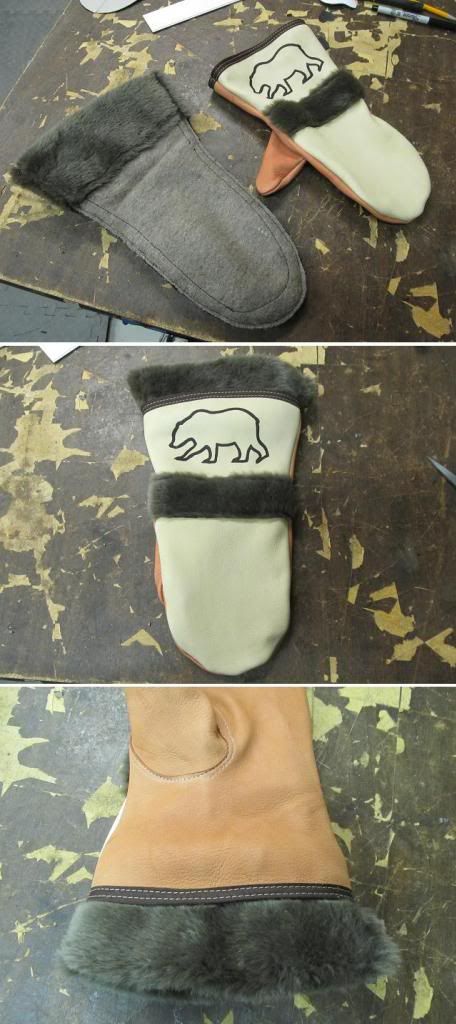
Waterproofing the leather is a two step process. It starts with neatsfoot oil. You can see from the sample piece of leather both the stained and natural leather will darken with the oil.
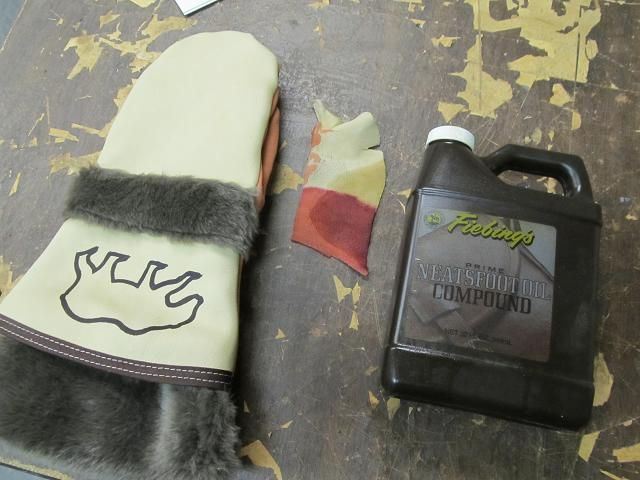
The first oiling makes it dark. Another oiling will make it darker and so will a coating of mink oil.
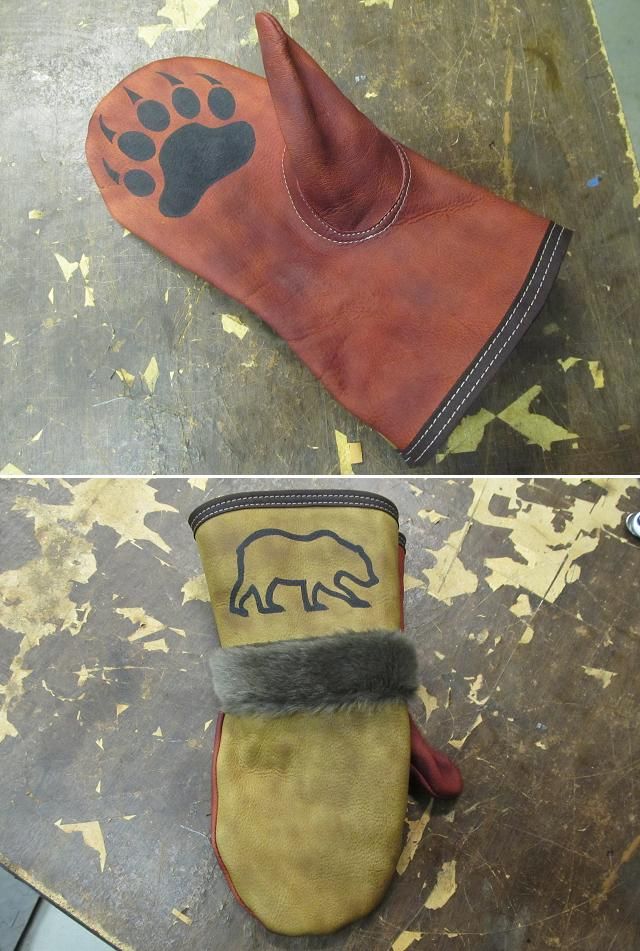
The mink oil is a paste or cream that looks a bit like Vaseline. I rub it in with a stiff sponge and then use a hot blow dryer to melt it so it soaks into the leather.

The finished pair.

My happy hand model braved the single digit temps for this photo shoot. Her bulky winter jacket sleeves fit nicely into the cuff of the mitt.
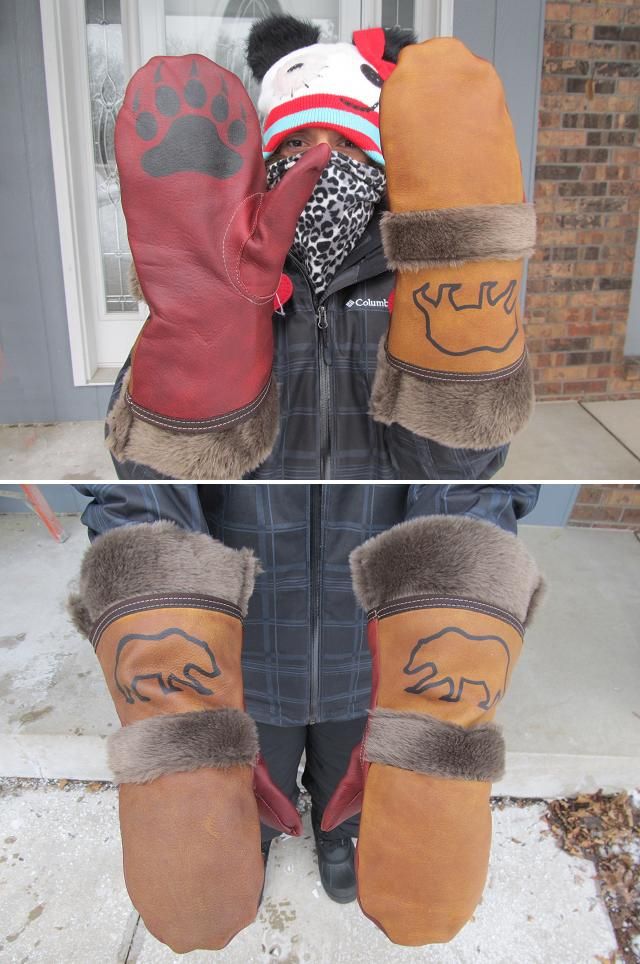
For never having made chopper mitts before I am pleased with how they turned out and have plans on how to improve upon the next one. Here is a short video of the mitt being placed under running water. It shows the waterproofing of the neatsfoot and mink oil. Over time another coating of the mink oil will need to be added if the leather shows signs that its getting wet..
http://www.youtube.com/watch?v=pAxDjBn-cHgMy hand model has already put in a request for a pair for herself. She wants different colors and symbols on hers.